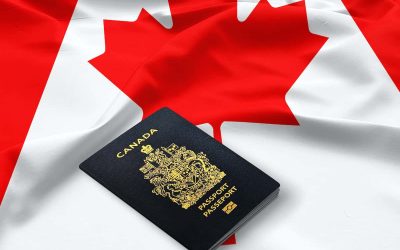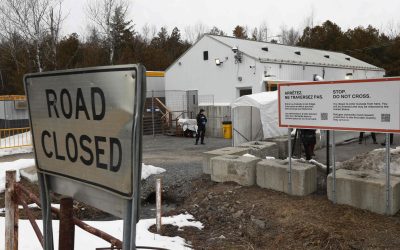Executive Summary
 Canada’s prosperity in the 21st century will largely depend on its abilit y to attract immigrants and to capitalize on their talents, training and aspirations. Canada needs an influx of skilled immigrants whose tax contributions will offset the social costs of an aging population and the rising costs of government programs. However, immigrants are not mere instruments for promoting prosperity for the rest of the Canadian community; law and public policy must value them as free and equal individuals. Both the public and immigrants benefit when immigrants are free to use their skills and training to achieve meaningful and prosperous lives.
Canada’s prosperity in the 21st century will largely depend on its abilit y to attract immigrants and to capitalize on their talents, training and aspirations. Canada needs an influx of skilled immigrants whose tax contributions will offset the social costs of an aging population and the rising costs of government programs. However, immigrants are not mere instruments for promoting prosperity for the rest of the Canadian community; law and public policy must value them as free and equal individuals. Both the public and immigrants benefit when immigrants are free to use their skills and training to achieve meaningful and prosperous lives.
Unfortunately, many skilled immigrants who arrive in Canada face regulatory barriers that prevent them from working in the professions for which they were trained. Specifically, they often find that Canadian occupational licensing bodies do not recognize the professional credentials they obtained in their home countries. This is often true even when the immigrants in question are eminently qualified professionals whose training was at least as demanding as the Canadian standard is.
This paper describes the types of barriers that immigrants face in obtaining recognition for their professional credentials and permission to work in the occupations for which they were trained. We show that many of these hurdles come at a significant cost to Canada’s economic productivity and capacity to generate tax revenue. We also discuss the ways in which these barriers can have a disastrous impact on the economic prospects of thousands of new Canadians and their families. Finally, we describe a number of approaches to policy reform that hold the potential to address barriers to entry for foreign-trained professionals.
This publication of the Frontier Centre for Public Policy makes available, in e-book form, a work recently published in academic journal f ormat in a special edition of the Asper Review of International Business and Trade Law journal.
In some circumstances, there are sound reasons for the public regulation of specific occupations. Such regulations are sometimes necessary to promote public safety or to protect consumers in highly specialized areas where they may be unable to accurately assess the quality of the services they are receiving. However, in many cases, licensing requirements and other obstacles to professional practice exist that do not serve these or any other legitimate objectives. Instead, the evidence suggests that the purpose of many barriers that prevent foreign-trained workers from entering their professions is to protect existing service providers from competition.
Governments may directly regulate occupations, or they may delegate regulatory authority to occupational bodies. For both approaches, the empirical evidence suggests that many restrictions to occupational freedom do not advance any identifiable public interest and that, in fact, they frequently harm consumers and the overall performance of the economy. Specifically, studies show that these barriers to professional practice can adversely affect consumers by reducing the number of practitioners, causing prices to rise.
Further, limits to entry to licensed occupations do not necessarily contribute to improved performance among those who are admitted. Empirical evidence in several contexts shows that many barriers to entry have little to no impact on quality and have increased prices and reduced the availability of services.
Additional factors distort the recognition of the credentials and substantive competencies in the case of foreign-trained professionals. Barriers to entry may not only be the product of protectionism on the part of existing providers but also the result of ignorance, stereotypes, and biases about the nature and quality of training, education and testing in other countries. These barriers to entry for foreign-trained practitioners pose an extremely serious problem in Canada. A few examples of the harm caused by these barriers are:
• The unwillingness of some occupational bodies to recognize foreign credentials profoundly impairs the effectiveness of programs that are designed to attract highly skilled immigrants to Canada. Many well-trained foreigners simply choose not to come to Canada because they reasonably fear they will not be allowed to practise their profession.
• For skilled immigrants who do come to Canada, these barriers can destroy their dreams and prevent them from using their talents and training productively.
• Barriers to entry can also deprive the public of the benefit of new ideas and techniques that talented and inspired newcomers acquire abroad, while denying occupational groups the opportunities to qualita tively and quantitatively strengthen themselves.
• Barriers to entry protect existing service providers from competition from foreign-trained workers, resulting in higher prices and lower-quality service for consumers than would exist if fair competition were permitted.
In addition to describing the impediments to professional practice faced by foreign-trained workers, this paper suggests a number of options for policy reform, each of which has the potential to help address barriers to entry for foreign-trained practitioners. Some of the most promising reform strategies are:
• Federal and provincial authorities should strengthen the substance of existing human rights legislation, so that it prohibits unjustified discrimination against foreign-trained workers.
• Provincial governments should enact and strengthen fair access legislation at the provincial level, which would address unnecessary hindrances to entry. Individuals must have the ability to seek and obtain legally binding remedies from an independent tribunal when regulatory authorities do not comply with the legislation.
• The federal government should amend the Federal Competition Act to clarify that unnecessary barriers to professions are not allowed.
• The federal government should restructure Canada’s immigration laws and practices, particularly by refining the point system for evaluating the strength of applications for immigration. A new formula should emphasize the extent to which an applicant’s home country credentials would actually be recognized upon the applicant’s arrival in Canada.
• The federal government should convene a First Ministers meeting to develop a jointly co-ordinated action plan to address these issues. The process by which the Agreement on Internal Trade was developed provides a model that can be followed to help promote co-operation between the provinces and the federal government in removing unfair barriers to professional practice.
Immigrants who are not allowed entry to the profession for which they were trained can feel demoralized and humiliated. The financial burden of pursuing a remedy can be insurmountable if they have just endured the costs of moving from their home country to a new land and have not had a chance to accumulate any kind of financial security through their practice in Canada.
This paper describes the ways in which barriers to professional practice unjustly prevent thousands of highly skilled and well-qualified immigrant professionals from working in the fields for which they were trained. We discuss the harm caused by these barriers, which limit the economic prospects of immigrants while leading to higher prices for consumers and weaker productivity growth and capacity for tax generation for the Canadian economy as a whole. Lastly, the volume explores various policy options that could facilitate liberalization of the regulated professions, so that foreign-trained workers are no longer prevented from practising their occupations. Canada’s provincial and federal governments must co-operate now to ensure that foreign-trained workers are no longer “admitted but excluded.”
View entire study as PDF (215 Pages)


